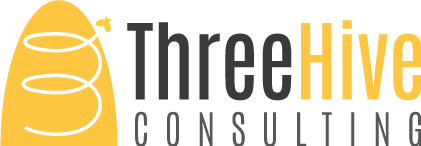
REACH Edmonton’s Bridging Together
How did Bridging Together improve the lives of immigrant and refugee youth?
How does Three Hive make an impact with our clients? We produce powerful tools for clients to demonstrate value.
Working with REACH Edmonton, we collected data through a combination of three segment-specific survey methods, interactive feedback sessions and mini-interviews.
The data was used to produce a social network analysis, as well as return on social return on investment calculation which effectively equip REACH to meet its funder’s requirements, and seek future funding for the Bridging Together initiative.
The challenge: REACH Edmonton Council had both a desire and a requirement to evaluate its new collaborative. REACH received funding from Immigration, Refugees and Citizenship Canada to act as the backbone organization for a collective of youth-serving non-profits. Each of the partner organizations already offered programming for immigrant and refugee youth outside of school hours. Their after-school and summer programs varied in focus, but common elements included academics, sports, life skills, culture and recreation.
“At REACH we do our best to evaluate everything we do,” says Program Manager Lisa Kardosh. “Because we were working more collaboratively for the first time, we wanted to make sure we were identifying problems early and making an impact in the lives of newcomer children and youth.”
How we connected: Three Hive responded to REACH’s RFP with a clear, visually engaging proposal. Our previous experience with youth and vulnerable populations, and our creative and unique ideas for engaging with newcomer children and youth stood out.
“It was important to find someone who had a gentle and kind approach to working with our partners and the vulnerable kids they serve. We place a lot of value on our partnerships. Three Hive showed flexibility in their approach, which was super important with so many stakeholders involved.”
Our impact: REACH Edmonton and Bridging Together can now announce the impact of their programming on the lives of immigrant and refugee youth. For Kardosh, the evaluation “provided a good opportunity to step back and look at the ‘big picture.’ When I’m focused on the day-to-day details it’s easy to forget how many lives the collaborative is reaching.”
“Having an unbiased third-party report to show our success is so important to be able to justify the worth of this collaborative to the funder we had, as well as potential future funders.”
Three U’s in action
Understand
The first phase in our Three U’s approach defines information needs. We met with more than a dozen stakeholders — both individually and collaboratively — to determine shared goals and establish outcomes. Extensive collaboration in this phase is critical to ensure each unique context is fully understood.
Together, we developed five main evaluation questions:
What makes each of Bridging Together’s partner programs unique?
Who are the programs reaching?
How is Bridging Together making a difference in the lives of children, youth and their families?
To what extent are partners collaborating with each other?
What is the returned social value of Bridging Together?
Uncover
Next, we needed to uncover the data to answer our questions. To reflect the diversity of partner programs, our approach to data collection needed to be strategic and multi-pronged. What works with 18-year-olds may not work so well with 8-year-olds. “When collecting data with the kids, Three Hive made it fun and made sure to respect the kids’ levels of comfortability,” reports Kardosh.
Our methods included some of the standard evaluator’s toolkit, along with more creative, customized approaches:
Interactive, arts-based feedback sessions with youth
Program experience surveys for older children and youth
Self-efficacy surveys for older children and youth
Video-recorded, small group interviews with children at sports leagues
Parent/caregiver program experience surveys
Interviews with partners
Administrative data analysis
Social return on investment, requiring detailed funding and spending information from all organizations
Utilize
Our third U really drives home the value of our approach. Why collect all this information if not to put it to use?
We provided an interim report of the first year’s results, along with individual reports of results for partners.
“The interim report gave the collaborative a chance to assess if we were on the right track,” says Kardosh. “It helped to shed light on gaps that were popping up, like more training being needed, so we could address them.”
The final report has been widely shared with partners and the funder, and REACH used it to develop a one-page brochure that partners can use for advocacy.
“A big thank you to Shelby and her team at Three Hive whose passion for data and evaluation came through in every meeting and in the evaluation itself!”
Lisa Kardosh (REACH Edmonton Council)



